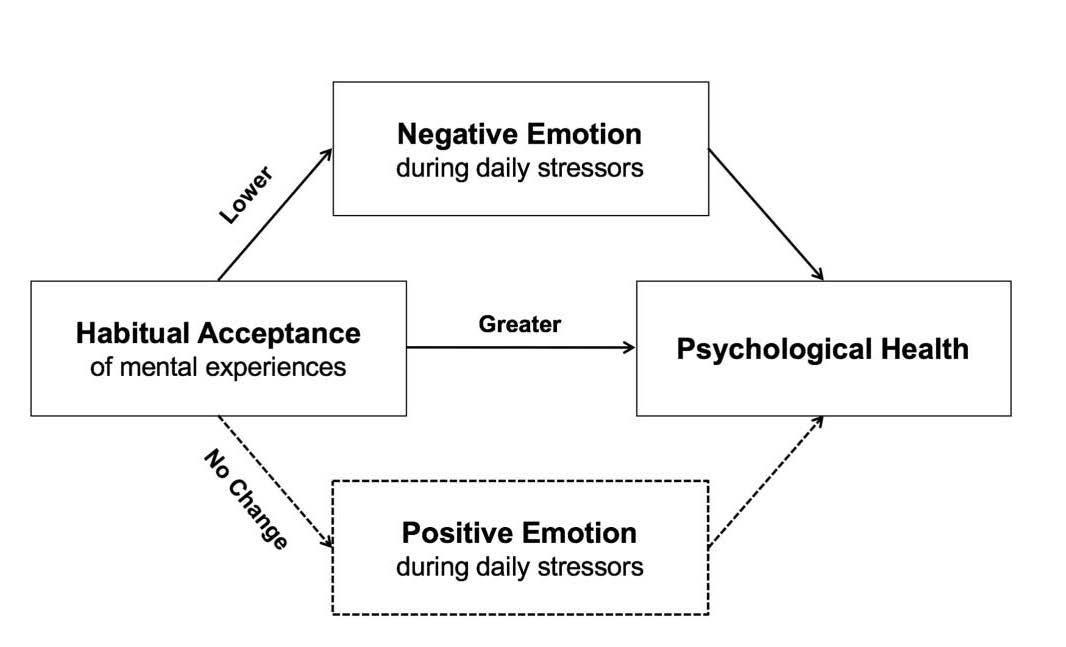The Power of Accepting Unpleasant Emotions by Alyssa Cameron, Psychology Major, 2023
B
etween parents, social media, and peers, most people have been exposed to messaging that preaches “positivity.” Quotes such as “just be positive” or “just look at the bright side” might come to mind. Such messaging suggests that it is possible and ideal to only experience positive emotions. It encourages people to push through, ignore, or change their unpleasant sensations in exchange for more comfortable ones. On the surface, this messaging seems helpful, or at the very least, harmless. However, research shows that adopting this mindset about emotions is damaging to one’s well-being. Multiple studies have shown that individuals who place more value on positivity or have higher expectations for happiness are, on average, actually less happy (Mauss et al., 2011). Similarly, because people with this mindset are overloaded with judgments that unpleasant feelings are “bad,” they are more likely to engage in unhelpful responses such as avoidance and rumination (David, 2016). In contrast to a resistant and judgemental approach to unpleasant emotional experiences, approaching such experiences with acceptance has been associated with greater psychological health (Ford et al., 2018). Fully experiencing and accepting unpleasant emotions is key to improving psychological well-being and can lessen the frequency and intensity of unpleasant emotions an individual experiences. Emotions are neurochemical systems that evolved to help us navigate the complex stimuli in our external world (David, 2016). Some emotions are far more pleasant to experience than others. Dr. Joan Rosenberg, a psychologist whose work focuses on unpleasant emotions and emotional mastery, identifies eight key unpleasant emotions: sadness, shame, helplessness, anger, vulnerability, embarrassment, disappointment, and frustration (Rosenberg, 2016). When one of these feelings gets triggered, chemicals are released in the brain, rush through the bloodstream, and activate various bodily sensations. Emotional experiences are first felt as these physical sensations, which are very real, very uncomfortable, and tempting to avoid. Rosenberg (2016) argues that it is not necessarily the emotion itself but the associated physical sensations that people want to run away from.
23
The Power of Accepting Unpleasant Emotions
Fully experiencing and accepting unpleasant emotions is key to improving psychological wellbeing and can lessen the frequency and intensity of unpleasant emotions an individual experiences.







